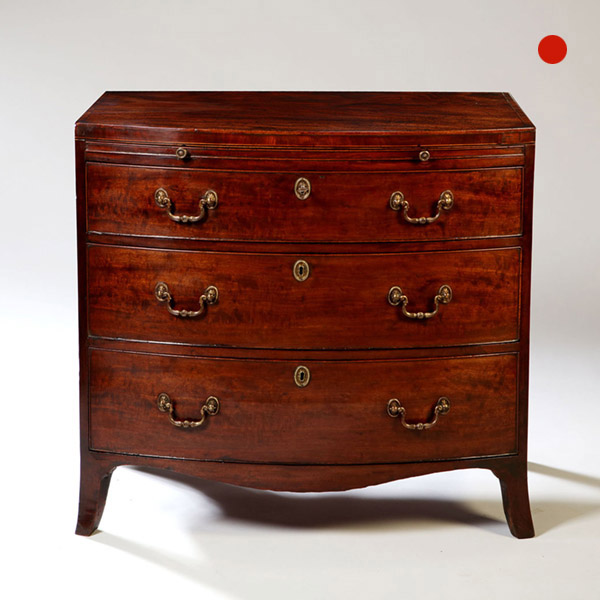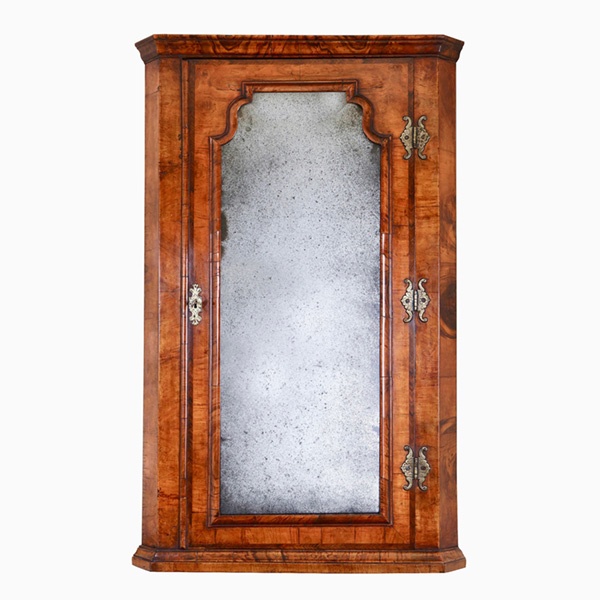Extremely Rare and Fine Miniature Kingwood Table Cabinet from the Reign of Charles
SOLD
Request Information
Follow Us
Extremely Rare and Fine Miniature Kingwood Table Cabinet from the Reign of Charles
Extremely rare and fine miniature kingwood table cabinet from The Reign of Charles II, circa 1660.
Cabinets of this type as I am sure you are aware, are rare objects and rarer still in Kingwood. Kingwood, also known as Princes Wood. was the most highly prized and expensive timber of the 17th century. Shipped from South America by early merchants, it was only used for the finest pieces of furniture, musical instruments and occasionally clocks.
The cabinet is of the highest quality throughout.
Condition
Good. Wear consistent with age and use.
Dimensions
Width 40cm
Height 29cm
Depth 25cm.
PREVIOUSLY SOLD

George III Sheraton period bow-fronted caddy topped mahogany chest of drawers
A fine George III Sheraton period bow-fronted mahogany chest of drawers with brushing slide. The chest has the perfect time aged colour to its original wax finished surface and has truly commendable proportions. I love everything about this outstanding and original piece.

George III Sheraton period bow-fronted caddy topped mahogany chest of drawers
A fine George III Sheraton period bow-fronted mahogany chest of drawers with brushing slide. The chest has the perfect time aged colour to its original wax finished surface and has truly commendable proportions. I love everything about this outstanding and original piece.
YOU MAY ALSO LIKE

Queen Anne Walnut Corner Cupboard with Bevelled Mirror Plate
A truly remarkable find in original condition. To the door a shaped soft bevelled mirror plate is framed by a cross-grain molding of typical queen Anne design which is further cross-banded, feather-banded and edged to the opening with a single de-molding.

Queen Anne Walnut Corner Cupboard with Bevelled Mirror Plate
A truly remarkable find in original condition. To the door a shaped soft bevelled mirror plate is framed by a cross-grain molding of typical queen Anne design which is further cross-banded, feather-banded and edged to the opening with a single de-molding.




















